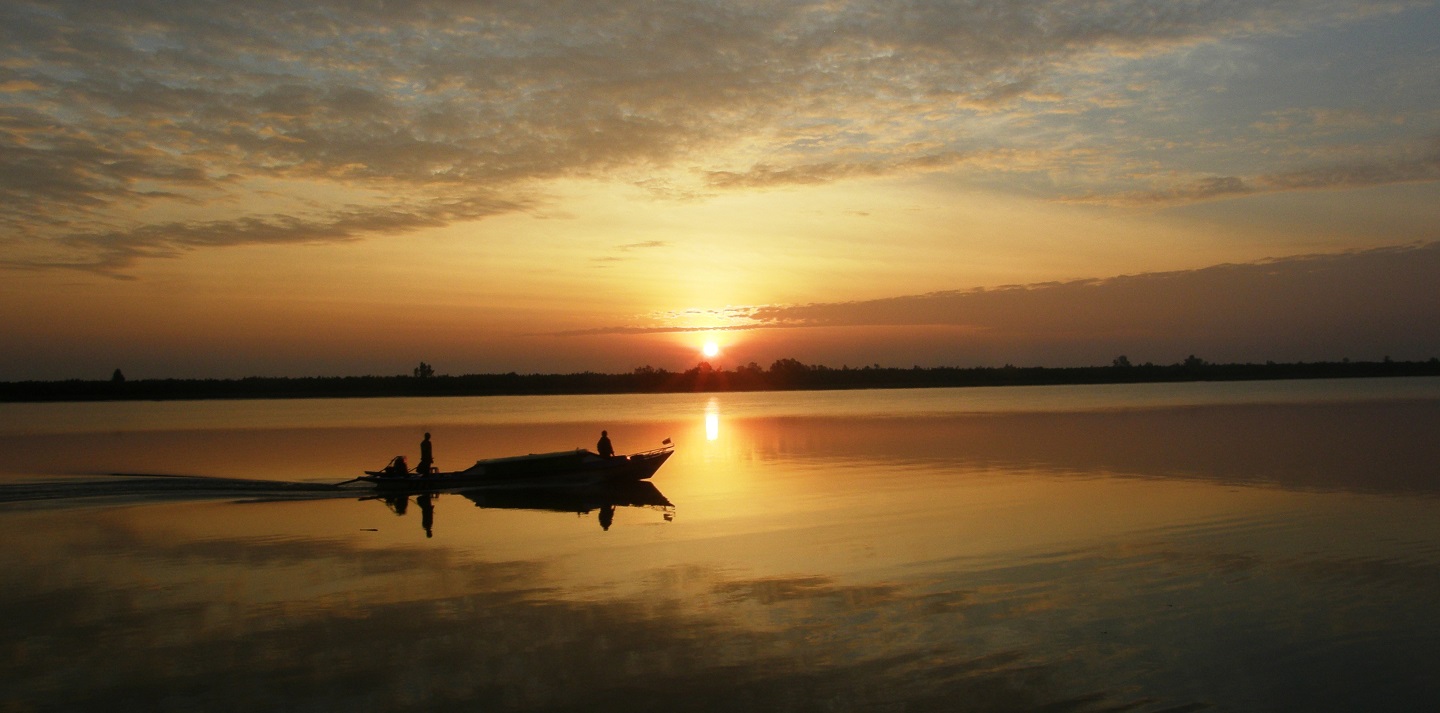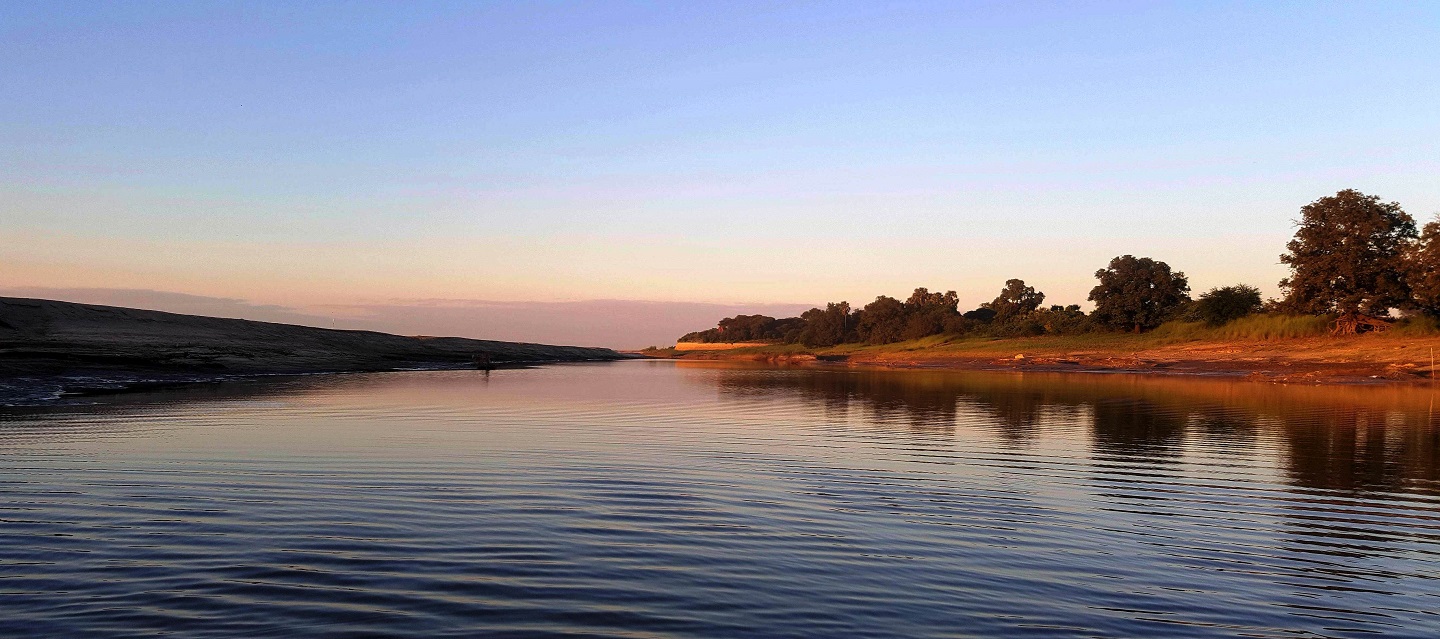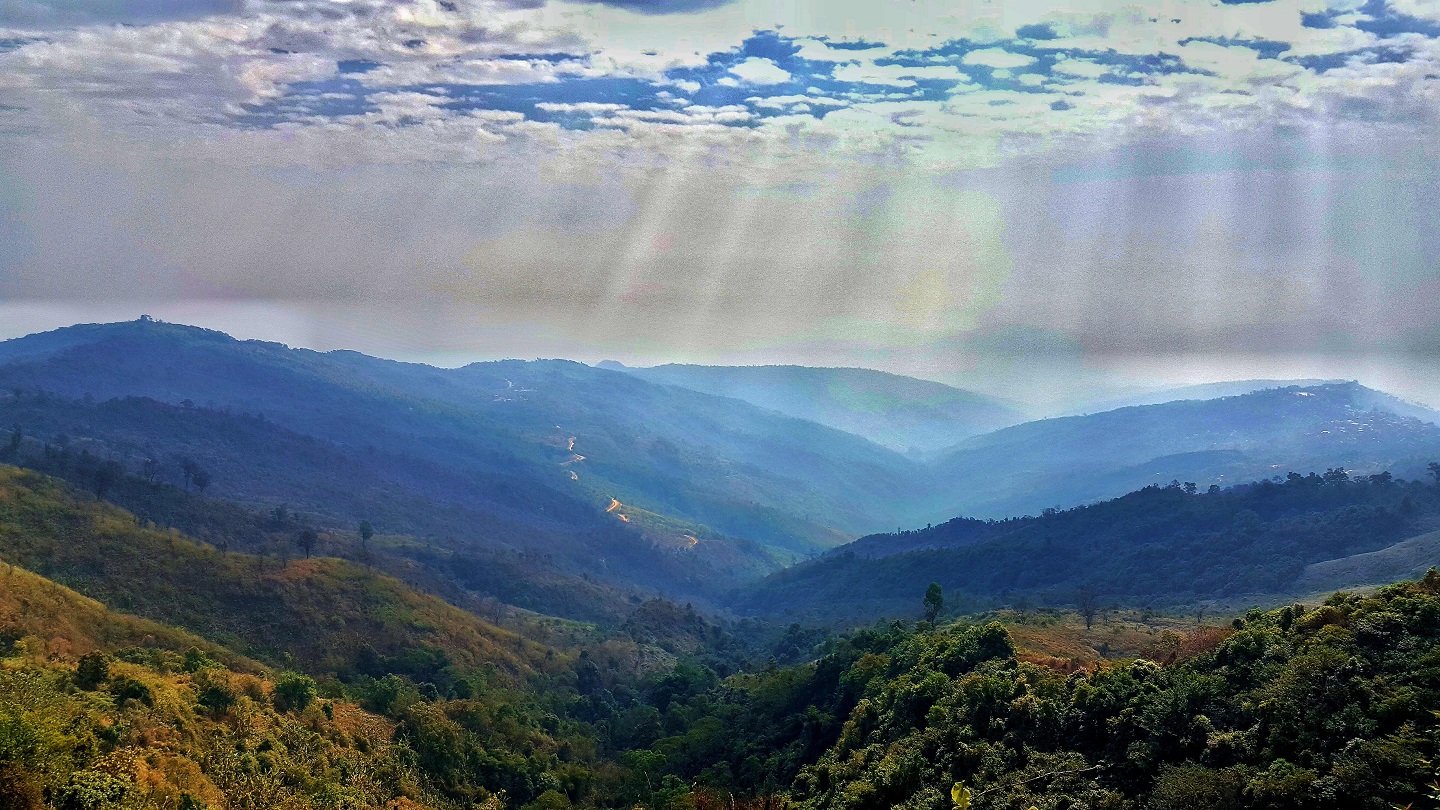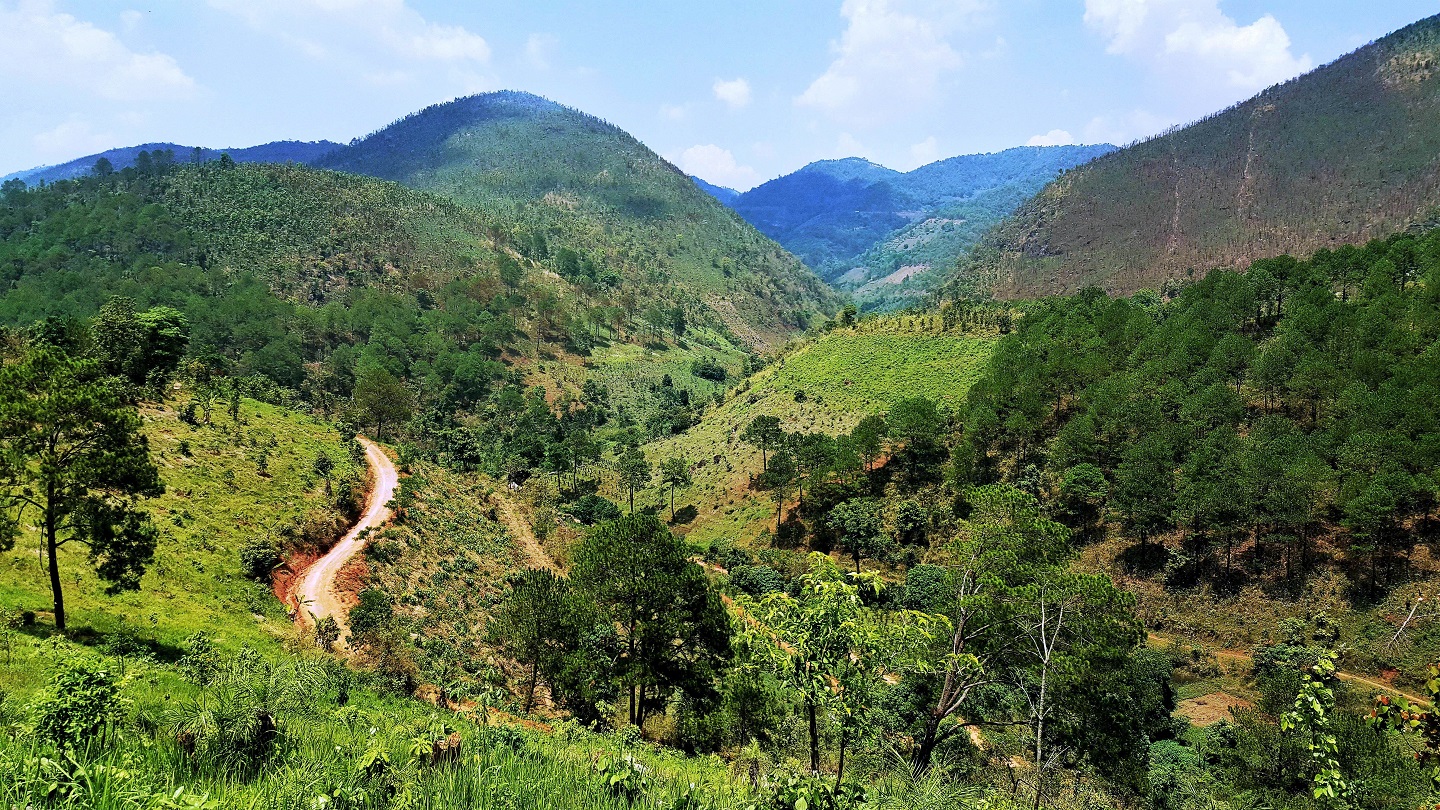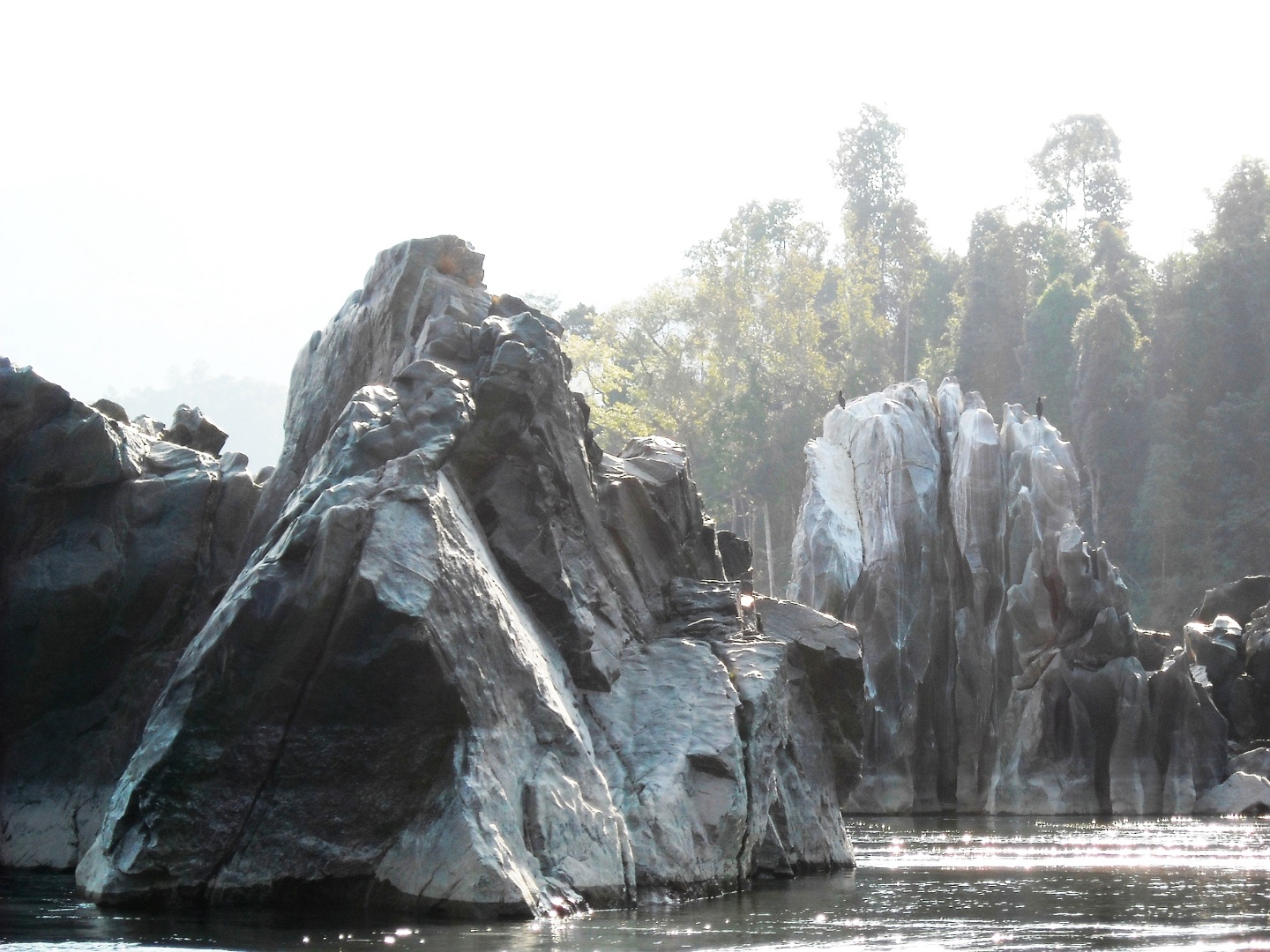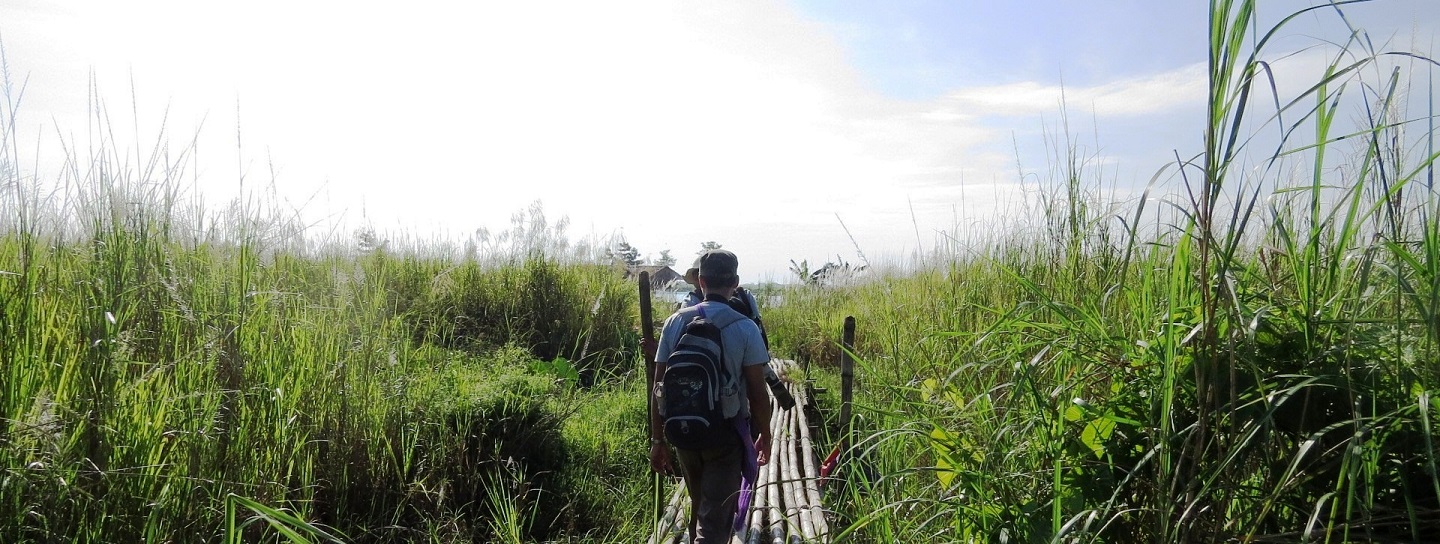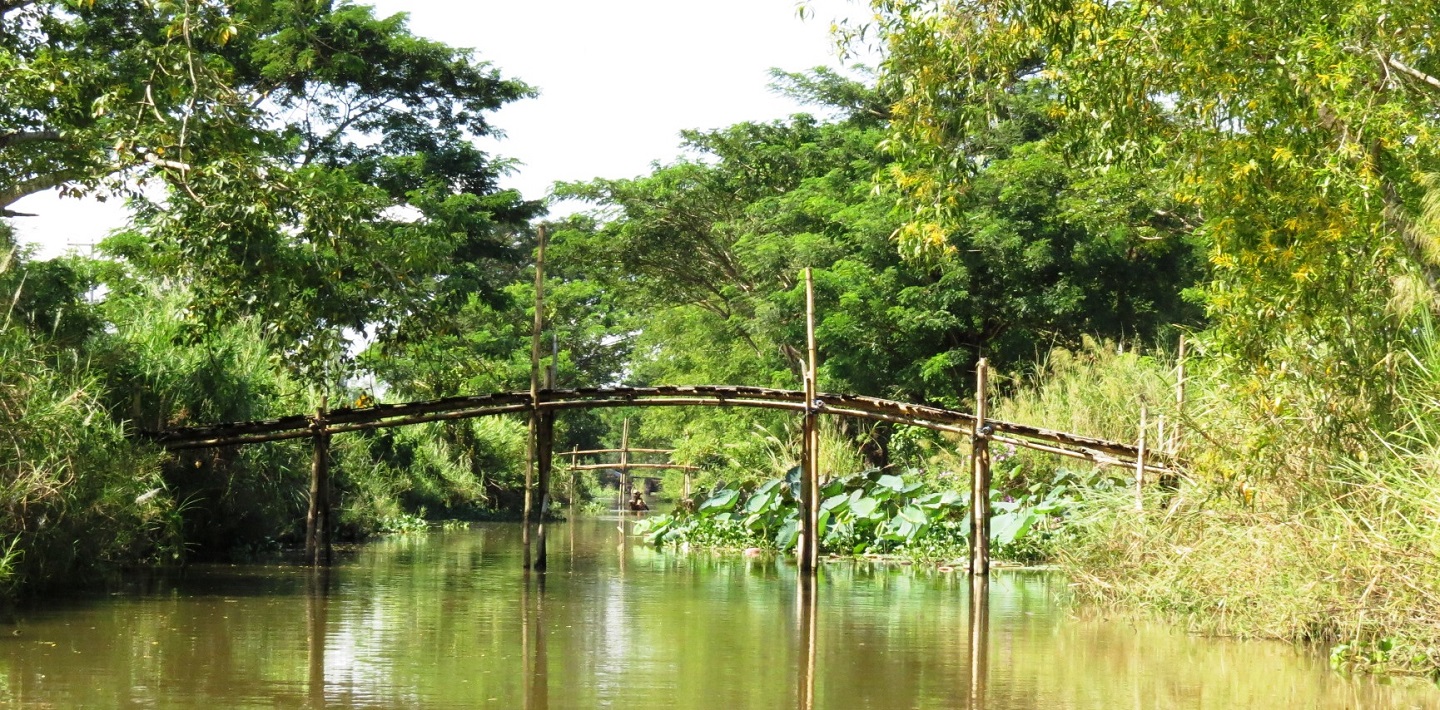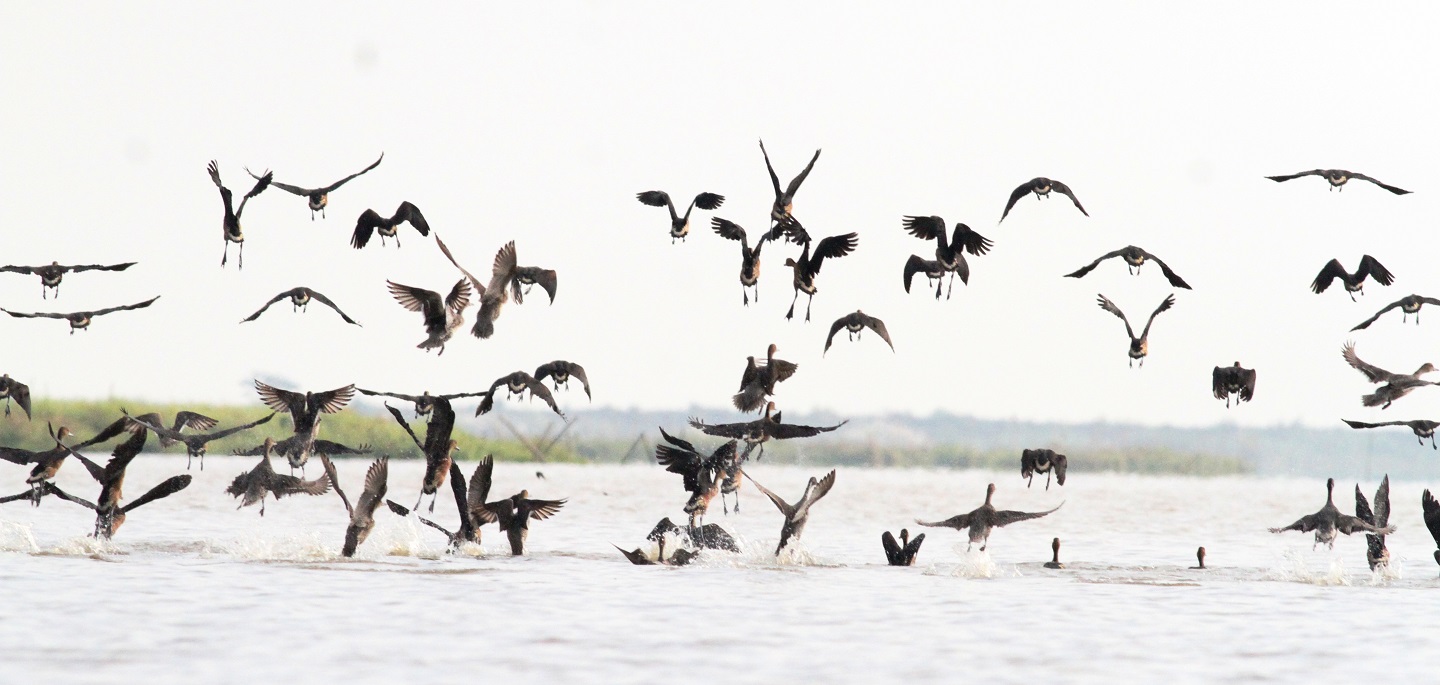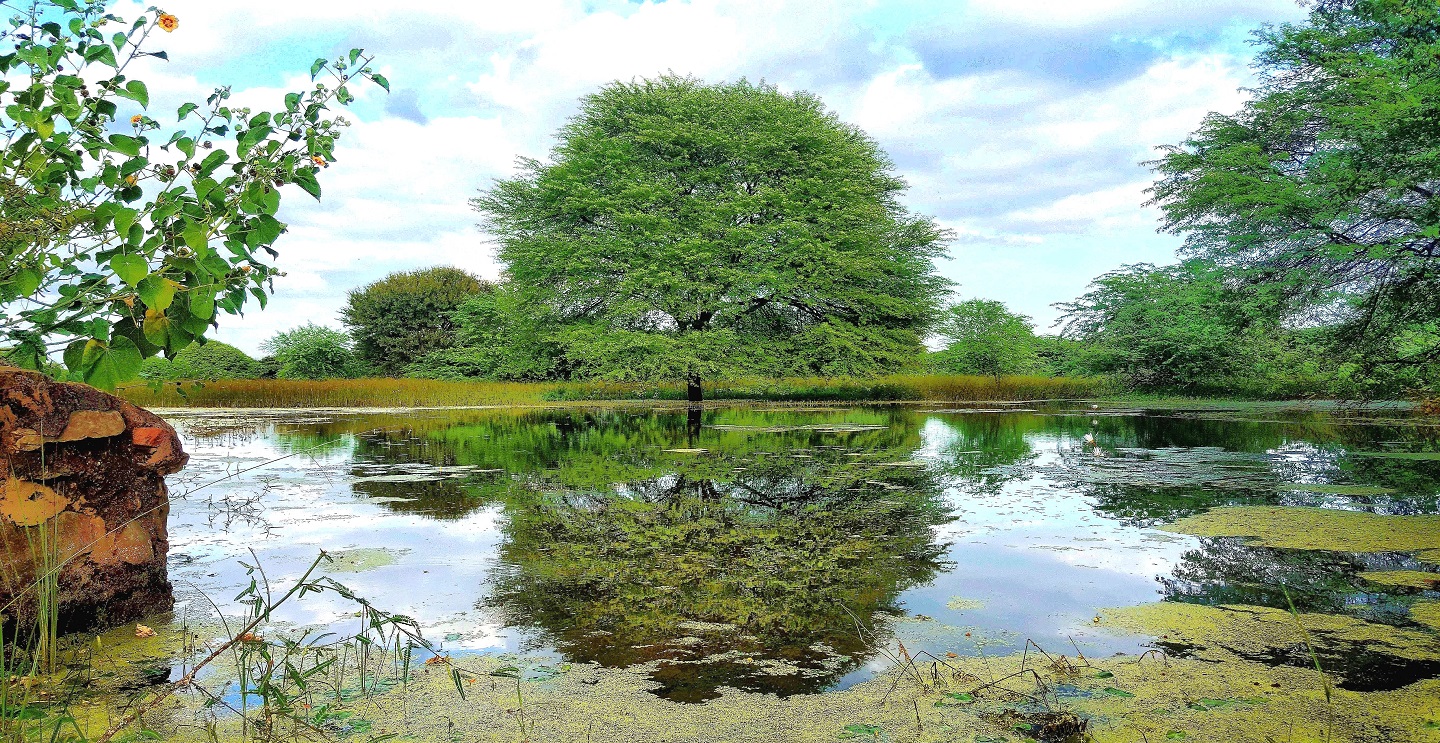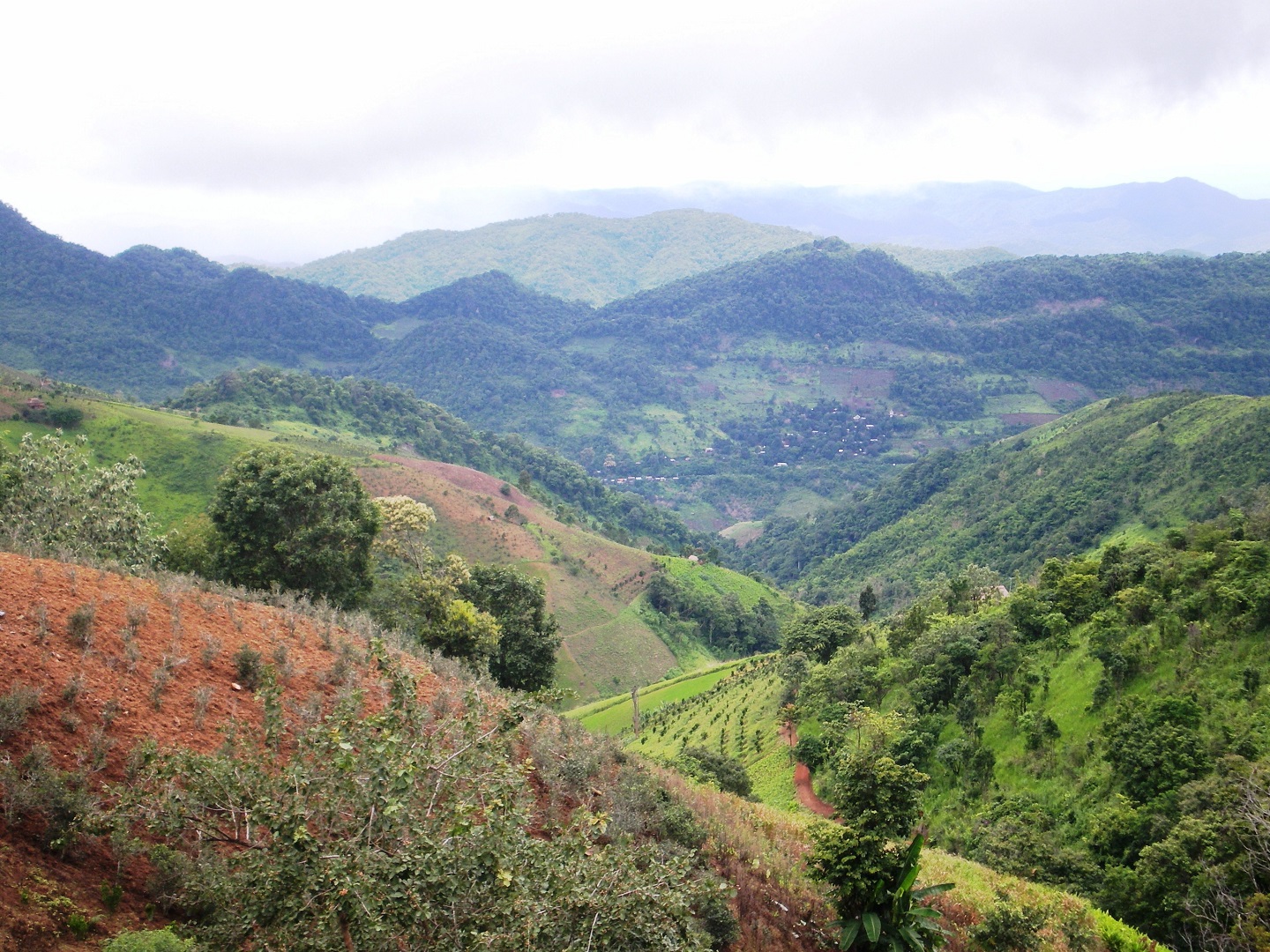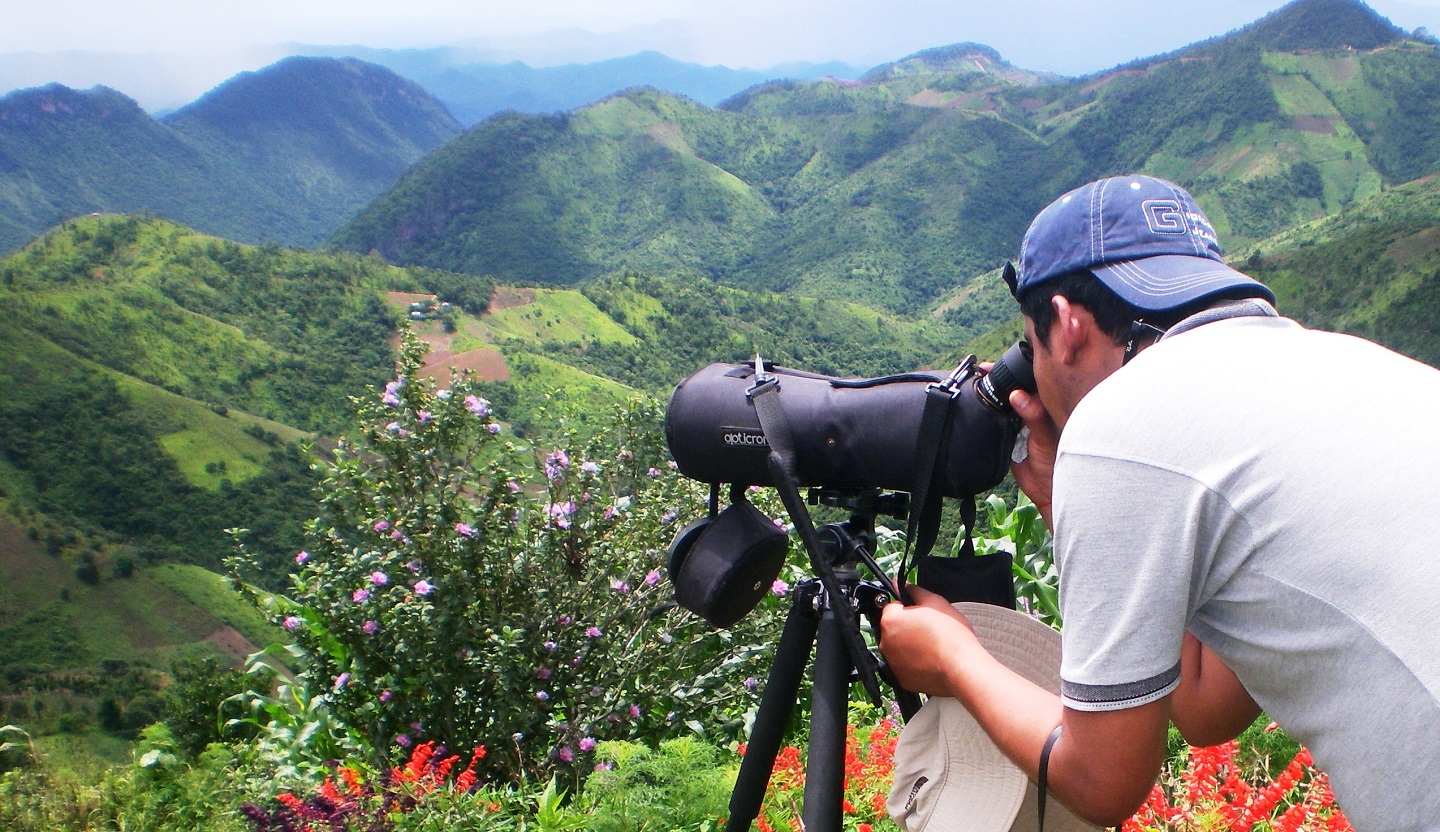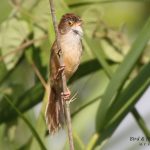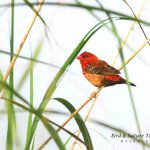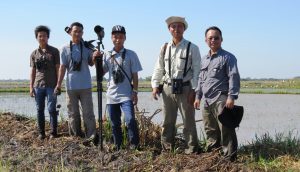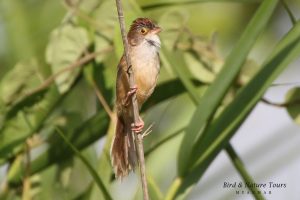Jerdon’s Babbler Expedition in MYANMAR
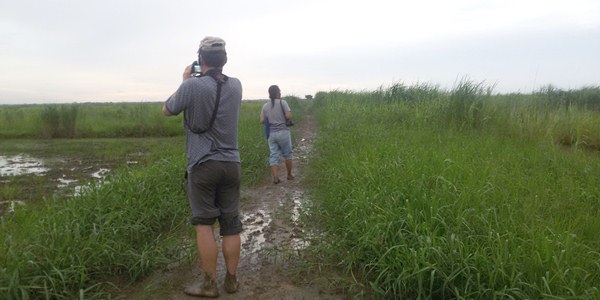
by Bird and Nature | Trip Reports | July 1, 2019
The rainy season is starting on July in Myanmar and it is a good time for birder to read and write some trip reports. As a birder, who led the bird watching tour in summer and winter have some free time in this season. Fortunately, my colleague Saw Moses is free and coincidental scientist Christoph Zöckler arrived Yangon from England for bird conservation workshop and we grab this good chance to visit the Ayeyarwaddy Delta region, which is situated in south of Myanmar according to the ornithological regions in south-east Asia and play an importance role for wetland depended bird species in the country, for looking the rare birds such as vulnerable species of Sarus Crane, Jerdon’s Babbler which previously thought to be extinct and resurfaced in March 2015 rediscovered by the team from Wildlife Conservation Society (WCS) Myanmar and Yellow-breasted bunting (Emberiza aureola) that is become critically endangered according to the IUCN Red List.
Therefore we decided to drive there on 17 June 2017 at 1:00 pm. It is raining in the morning before we left Yangon and luckily the rain was stopped the whole afternoon. We stopped several times on the way to find the birds and we recorded these species: Lesser Whistling-ducks, Cotton Pygmy-gooses, four juvenile of Painted Storks, Asian Openbills, Yellow Bitterns, Indian Pond-herons, Eastern Cattle Egrets, at least six Grey Herons, Great Egrets, Intermediate Egrets, Little Egrets, Little Cormorants, six Oriental Daters, Black-shoulder Kites, heard everywhere and seen two Watercocks, Bronze-winged Jacanas, Rock Pigeons, Red Collared-doves, Spotted Doves,
Greater Coucals,White-throated Kingfishers,Little Green Bee-eaters, Blue-tailed Bee-eaters, Common Ioras, Black Drongos, House and Eastern Jungle Crows, Scarlet-backed Flowerpecker, White-rumped Munias, Eurasian Tree-sparrows.
We stayed one night at Soe Theikpan Guest House in small town, Wakhaema. The guest house is clean with bathroom attached and reasonable price but no hot water and breakfast. Foreigners have to show their passport for staying overnight.
On second day, 18 June 2017, early next morning we checked out from guest house and went to local tea shop where we can get fried rice with omelette or half fried egg, some local snacks with tea and instant coffee mix for our breakfast. We drove back along the same way we came on the first day in the welcome weather and stop at the place which has some patch of grasslands with a grove of rain trees. Here we found a nice variety of birds, including a pair of Sarus Crane, Coppersmith Barbet, Fulvous-breasted Woodpecker, Plaintive Cuckoo, Black Bittern, Red-wattled Lapwing, four Oriental Pratincoles with a young one was fed, a pair of Spotted Owlets, Indian Roller, Pied Kingfisher, Ashy Woodswallow, a nice view of Streaked Weavers building their nests, Asian Golden Weaver in breeding plumage, Chestnut Munia, House and Plain-backed Sparrows, Paddyfield Pipit, Jungle and Common Mynas, Asian Pied and Chestnut-tailed Starlings, Pied Bushchat, Oriental Magpie-robins, Common Tailorbirds, Red-whiskered and Red-vented Bulbuls.
Although we tried to find one of our target species Jerdon’s Babbler by using the playback but absent. And then we moved to another spot and took a walk off the main road along the muddy path through the massive grasslands. Shortly afterwards however, we spotted the real thing in the right habitat and, after a hot pursuit we eventually tracked the bird to a feeding site where we could watch it at close range as long as we wanted. Two of them were feeding on the tall reeds and also collecting the nest material which looked like the cotton between the two leaflets of reed and it might be used for spreading on the nest to smooth the floor of it. Two different groups of Sarus Crane, four in the first group including a young one and six in the second group. Yellow-eyed and Chestnut-capped Babblers, several Zitting Cisticolas, Grey-breasted, Yellow-bellied and Plain Prinias were also found. The habitats around this area is still in good condition but what should we worry is the newly establishment of fish pond near the grasslands.
We spent the whole morning for looking birds and drove back when the torrential rain started and had our lunch on the way back. It took us three hours from the birding site to Yangon.
